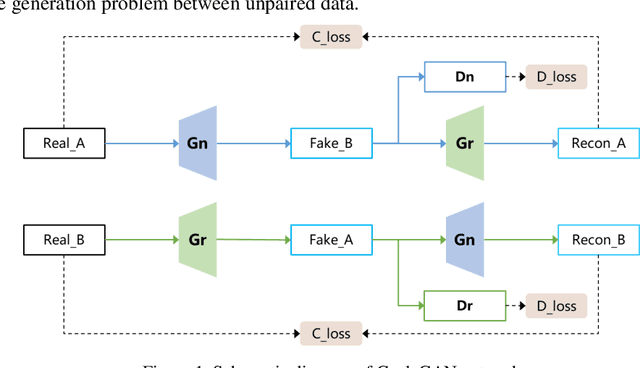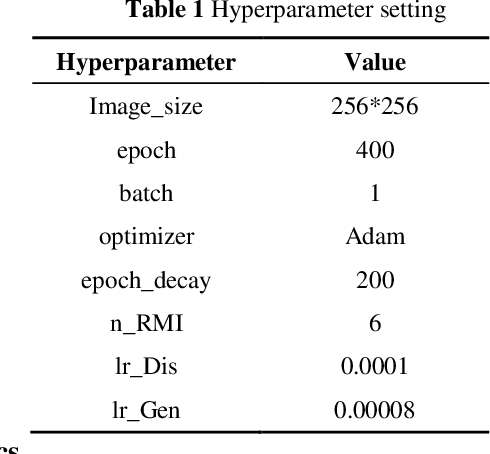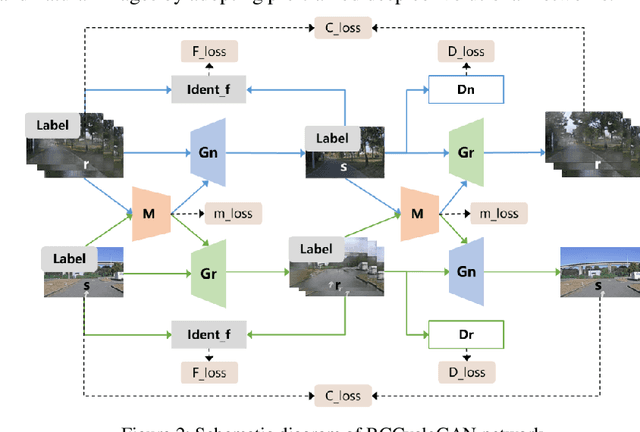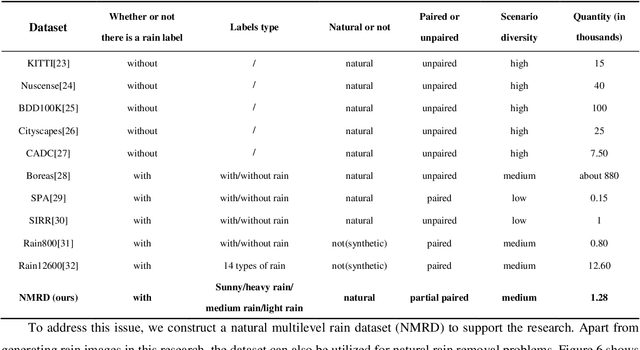Tong Jia
GAA-TSO: Geometry-Aware Assisted Depth Completion for Transparent and Specular Objects
Mar 21, 2025Abstract:Transparent and specular objects are frequently encountered in daily life, factories, and laboratories. However, due to the unique optical properties, the depth information on these objects is usually incomplete and inaccurate, which poses significant challenges for downstream robotics tasks. Therefore, it is crucial to accurately restore the depth information of transparent and specular objects. Previous depth completion methods for these objects usually use RGB information as an additional channel of the depth image to perform depth prediction. Due to the poor-texture characteristics of transparent and specular objects, these methods that rely heavily on color information tend to generate structure-less depth predictions. Moreover, these 2D methods cannot effectively explore the 3D structure hidden in the depth channel, resulting in depth ambiguity. To this end, we propose a geometry-aware assisted depth completion method for transparent and specular objects, which focuses on exploring the 3D structural cues of the scene. Specifically, besides extracting 2D features from RGB-D input, we back-project the input depth to a point cloud and build the 3D branch to extract hierarchical scene-level 3D structural features. To exploit 3D geometric information, we design several gated cross-modal fusion modules to effectively propagate multi-level 3D geometric features to the image branch. In addition, we propose an adaptive correlation aggregation strategy to appropriately assign 3D features to the corresponding 2D features. Extensive experiments on ClearGrasp, OOD, TransCG, and STD datasets show that our method outperforms other state-of-the-art methods. We further demonstrate that our method significantly enhances the performance of downstream robotic grasping tasks.
Enhancing Web Service Anomaly Detection via Fine-grained Multi-modal Association and Frequency Domain Analysis
Jan 28, 2025Abstract:Anomaly detection is crucial for ensuring the stability and reliability of web service systems. Logs and metrics contain multiple information that can reflect the system's operational state and potential anomalies. Thus, existing anomaly detection methods use logs and metrics to detect web service systems' anomalies through data fusion approaches. They associate logs and metrics using coarse-grained time window alignment and capture the normal patterns of system operation through reconstruction. However, these methods have two issues that limit their performance in anomaly detection. First, due to asynchrony between logs and metrics, coarse-grained time window alignment cannot achieve a precise association between the two modalities. Second, reconstruction-based methods suffer from severe overgeneralization problems, resulting in anomalies being accurately reconstructed. In this paper, we propose a novel anomaly detection method named FFAD to address these two issues. On the one hand, FFAD employs graph-based alignment to mine and extract associations between the modalities from the constructed log-metric relation graph, achieving precise associations between logs and metrics. On the other hand, we improve the model's fit to normal data distributions through Fourier Frequency Focus, thereby enhancing the effectiveness of anomaly detection. We validated the effectiveness of our model on two real-world industrial datasets and one open-source dataset. The results show that our method achieves an average anomaly detection F1-score of 93.6%, representing an 8.8% improvement over previous state-of-the-art methods.
CSPCL: Category Semantic Prior Contrastive Learning for Deformable DETR-Based Prohibited Item Detectors
Jan 28, 2025



Abstract:Prohibited item detection based on X-ray images is one of the most effective security inspection methods. However, the foreground-background feature coupling caused by the overlapping phenomenon specific to X-ray images makes general detectors designed for natural images perform poorly. To address this issue, we propose a Category Semantic Prior Contrastive Learning (CSPCL) mechanism, which aligns the class prototypes perceived by the classifier with the content queries to correct and supplement the missing semantic information responsible for classification, thereby enhancing the model sensitivity to foreground features.To achieve this alignment, we design a specific contrastive loss, CSP loss, which includes Intra-Class Truncated Attraction (ITA) loss and Inter-Class Adaptive Repulsion (IAR) loss, and outperforms classic N-pair loss and InfoNCE loss. Specifically, ITA loss leverages class prototypes to attract intra-class category-specific content queries while preserving necessary distinctiveness. IAR loss utilizes class prototypes to adaptively repel inter-class category-specific content queries based on the similarity between class prototypes, helping disentangle features of similar categories.CSPCL is general and can be easily integrated into Deformable DETR-based models. Extensive experiments on the PIXray and OPIXray datasets demonstrate that CSPCL significantly enhances the performance of various state-of-the-art models without increasing complexity.The code will be open source once the paper is accepted.
CRoF: CLIP-based Robust Few-shot Learning on Noisy Labels
Dec 17, 2024



Abstract:Noisy labels threaten the robustness of few-shot learning (FSL) due to the inexact features in a new domain. CLIP, a large-scale vision-language model, performs well in FSL on image-text embedding similarities, but it is susceptible to misclassification caused by noisy labels. How to enhance domain generalization of CLIP on noisy data within FSL tasks is a critical challenge. In this paper, we provide a novel view to mitigate the influence of noisy labels, CLIP-based Robust Few-shot learning (CRoF). CRoF is a general plug-in module for CLIP-based models. To avoid misclassification and confused label embedding, we design the few-shot task-oriented prompt generator to give more discriminative descriptions of each category. The proposed prompt achieves larger distances of inter-class textual embedding. Furthermore, rather than fully trusting zero-shot classification by CLIP, we fine-tune CLIP on noisy few-shot data in a new domain with a weighting strategy like label-smooth. The weights for multiple potentially correct labels consider the relationship between CLIP's prior knowledge and original label information to ensure reliability. Our multiple label loss function further supports robust training under this paradigm. Comprehensive experiments show that CRoF, as a plug-in, outperforms fine-tuned and vanilla CLIP models on different noise types and noise ratios.
Reducing Events to Augment Log-based Anomaly Detection Models: An Empirical Study
Sep 07, 2024Abstract:As software systems grow increasingly intricate, the precise detection of anomalies have become both essential and challenging. Current log-based anomaly detection methods depend heavily on vast amounts of log data leading to inefficient inference and potential misguidance by noise logs. However, the quantitative effects of log reduction on the effectiveness of anomaly detection remain unexplored. Therefore, we first conduct a comprehensive study on six distinct models spanning three datasets. Through the study, the impact of log quantity and their effectiveness in representing anomalies is qualifies, uncovering three distinctive log event types that differently influence model performance. Drawing from these insights, we propose LogCleaner: an efficient methodology for the automatic reduction of log events in the context of anomaly detection. Serving as middleware between software systems and models, LogCleaner continuously updates and filters anti-events and duplicative-events in the raw generated logs. Experimental outcomes highlight LogCleaner's capability to reduce over 70% of log events in anomaly detection, accelerating the model's inference speed by approximately 300%, and universally improving the performance of models for anomaly detection.
Open-Vocabulary X-ray Prohibited Item Detection via Fine-tuning CLIP
Jun 16, 2024Abstract:X-ray prohibited item detection is an essential component of security check and categories of prohibited item are continuously increasing in accordance with the latest laws. Previous works all focus on close-set scenarios, which can only recognize known categories used for training and often require time-consuming as well as labor-intensive annotations when learning novel categories, resulting in limited real-world applications. Although the success of vision-language models (e.g. CLIP) provides a new perspectives for open-set X-ray prohibited item detection, directly applying CLIP to X-ray domain leads to a sharp performance drop due to domain shift between X-ray data and general data used for pre-training CLIP. To address aforementioned challenges, in this paper, we introduce distillation-based open-vocabulary object detection (OVOD) task into X-ray security inspection domain by extending CLIP to learn visual representations in our specific X-ray domain, aiming to detect novel prohibited item categories beyond base categories on which the detector is trained. Specifically, we propose X-ray feature adapter and apply it to CLIP within OVOD framework to develop OVXD model. X-ray feature adapter containing three adapter submodules of bottleneck architecture, which is simple but can efficiently integrate new knowledge of X-ray domain with original knowledge, further bridge domain gap and promote alignment between X-ray images and textual concepts. Extensive experiments conducted on PIXray and PIDray datasets demonstrate that proposed method performs favorably against other baseline OVOD methods in detecting novel categories in X-ray scenario. It outperforms previous best result by 15.2 AP50 and 1.5 AP50 on PIXray and PIDray with achieving 21.0 AP50 and 27.8 AP50 respectively.
MMCL: Boosting Deformable DETR-Based Detectors with Multi-Class Min-Margin Contrastive Learning for Superior Prohibited Item Detection
Jun 05, 2024Abstract:Prohibited Item detection in X-ray images is one of the most effective security inspection methods.However, differing from natural light images, the unique overlapping phenomena in X-ray images lead to the coupling of foreground and background features, thereby lowering the accuracy of general object detectors.Therefore, we propose a Multi-Class Min-Margin Contrastive Learning (MMCL) method that, by clarifying the category semantic information of content queries under the deformable DETR architecture, aids the model in extracting specific category foreground information from coupled features.Specifically, after grouping content queries by the number of categories, we employ the Multi-Class Inter-Class Exclusion (MIE) loss to push apart content queries from different groups. Concurrently, the Intra-Class Min-Margin Clustering (IMC) loss is utilized to attract content queries within the same group, while ensuring the preservation of necessary disparity. As training, the inherent Hungarian matching of the model progressively strengthens the alignment between each group of queries and the semantic features of their corresponding category of objects. This evolving coherence ensures a deep-seated grasp of category characteristics, consequently bolstering the anti-overlapping detection capabilities of models.MMCL is versatile and can be easily plugged into any deformable DETR-based model with dozens of lines of code. Extensive experiments on the PIXray and OPIXray datasets demonstrate that MMCL significantly enhances the performance of various state-of-the-art models without increasing complexity. The code has been released at https://github.com/anonymity0403/MMCL.
AO-DETR: Anti-Overlapping DETR for X-Ray Prohibited Items Detection
Mar 07, 2024



Abstract:Prohibited item detection in X-ray images is one of the most essential and highly effective methods widely employed in various security inspection scenarios. Considering the significant overlapping phenomenon in X-ray prohibited item images, we propose an Anti-Overlapping DETR (AO-DETR) based on one of the state-of-the-art general object detectors, DINO. Specifically, to address the feature coupling issue caused by overlapping phenomena, we introduce the Category-Specific One-to-One Assignment (CSA) strategy to constrain category-specific object queries in predicting prohibited items of fixed categories, which can enhance their ability to extract features specific to prohibited items of a particular category from the overlapping foreground-background features. To address the edge blurring problem caused by overlapping phenomena, we propose the Look Forward Densely (LFD) scheme, which improves the localization accuracy of reference boxes in mid-to-high-level decoder layers and enhances the ability to locate blurry edges of the final layer. Similar to DINO, our AO-DETR provides two different versions with distinct backbones, tailored to meet diverse application requirements. Extensive experiments on the PIXray and OPIXray datasets demonstrate that the proposed method surpasses the state-of-the-art object detectors, indicating its potential applications in the field of prohibited item detection. The source code will be released at https://github.com/Limingyuan001/AO-DETR-test.
Hierarchical-level rain image generative model based on GAN
Sep 06, 2023



Abstract:Autonomous vehicles are exposed to various weather during operation, which is likely to trigger the performance limitations of the perception system, leading to the safety of the intended functionality (SOTIF) problems. To efficiently generate data for testing the performance of visual perception algorithms under various weather conditions, a hierarchical-level rain image generative model, rain conditional CycleGAN (RCCycleGAN), is constructed. RCCycleGAN is based on the generative adversarial network (GAN) and can generate images of light, medium, and heavy rain. Different rain intensities are introduced as labels in conditional GAN (CGAN). Meanwhile, the model structure is optimized and the training strategy is adjusted to alleviate the problem of mode collapse. In addition, natural rain images of different intensities are collected and processed for model training and validation. Compared with the two baseline models, CycleGAN and DerainCycleGAN, the peak signal-to-noise ratio (PSNR) of RCCycleGAN on the test dataset is improved by 2.58 dB and 0.74 dB, and the structural similarity (SSIM) is improved by 18% and 8%, respectively. The ablation experiments are also carried out to validate the effectiveness of the model tuning.
AGG-Net: Attention Guided Gated-convolutional Network for Depth Image Completion
Sep 04, 2023Abstract:Recently, stereo vision based on lightweight RGBD cameras has been widely used in various fields. However, limited by the imaging principles, the commonly used RGB-D cameras based on TOF, structured light, or binocular vision acquire some invalid data inevitably, such as weak reflection, boundary shadows, and artifacts, which may bring adverse impacts to the follow-up work. In this paper, we propose a new model for depth image completion based on the Attention Guided Gated-convolutional Network (AGG-Net), through which more accurate and reliable depth images can be obtained from the raw depth maps and the corresponding RGB images. Our model employs a UNet-like architecture which consists of two parallel branches of depth and color features. In the encoding stage, an Attention Guided Gated-Convolution (AG-GConv) module is proposed to realize the fusion of depth and color features at different scales, which can effectively reduce the negative impacts of invalid depth data on the reconstruction. In the decoding stage, an Attention Guided Skip Connection (AG-SC) module is presented to avoid introducing too many depth-irrelevant features to the reconstruction. The experimental results demonstrate that our method outperforms the state-of-the-art methods on the popular benchmarks NYU-Depth V2, DIML, and SUN RGB-D.
 Add to Chrome
Add to Chrome Add to Firefox
Add to Firefox Add to Edge
Add to Edge